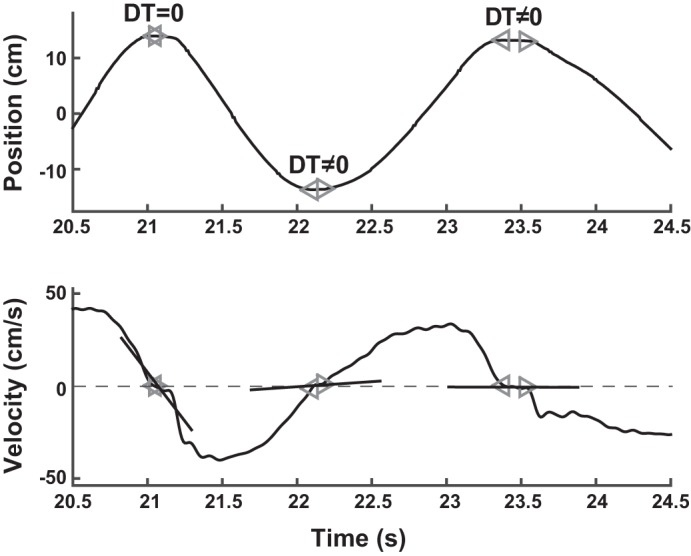Fig. 4.

Estimation of dwell time based on position and velocity of a short trial segment. For each movement, its onset tonset (forward-facing triangle) and end tend (backward-facing triangle) was first assigned to the time when velocity rose above and (respectively) fell below 5% of the peak velocity of the intervening movement. A linear regression of velocity onto time was then applied to the samples between tend of one movement and tonset of the next. If the regression slope reliably exceeded 0.25 cm/s2 (i.e., with R2 > 0.70) the adjacent tend and tonset were merged into a single time point. This occurred at t ≅ 21 s in the data above. If the regression slope was less than 0.25 cm/s2 or was unreliable (R2 < 0.70), the distinct values of tend and tonset were retained and dwell time was nonzero. This occurred at t ≅ 22 s and t ≅ 23.5 s in the data shown.
